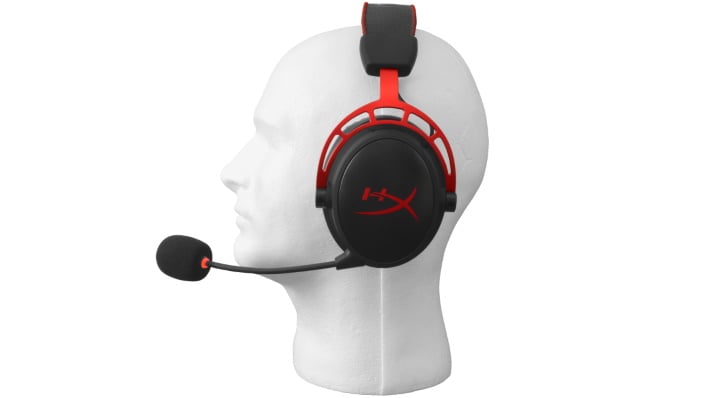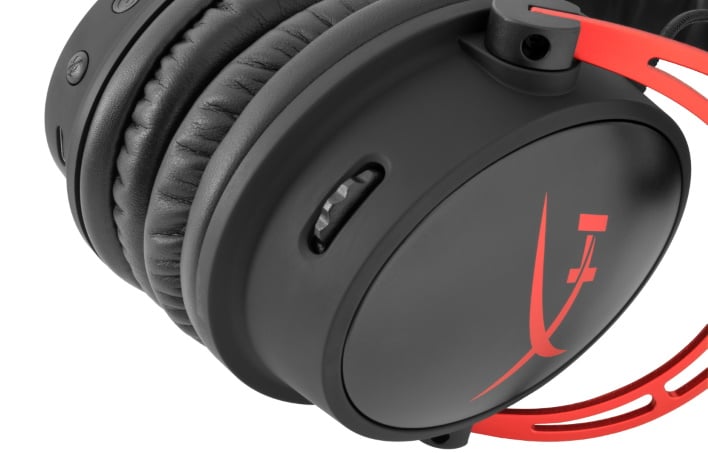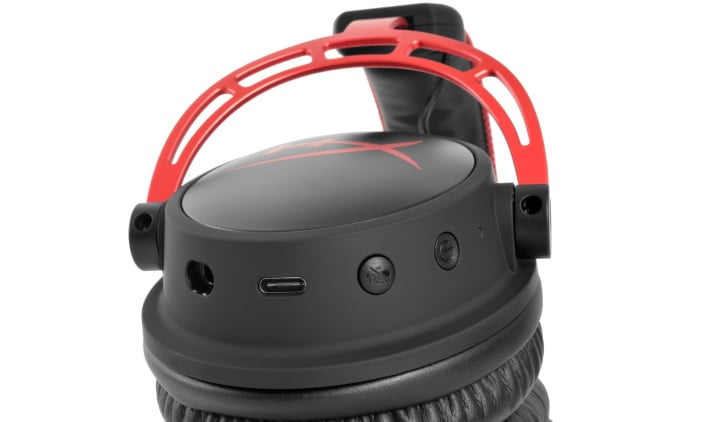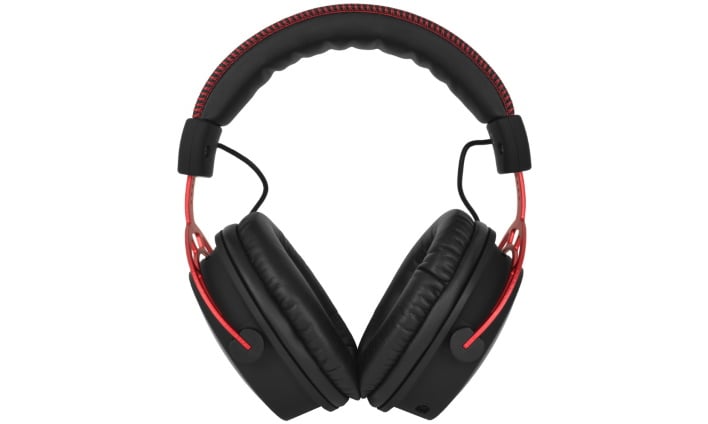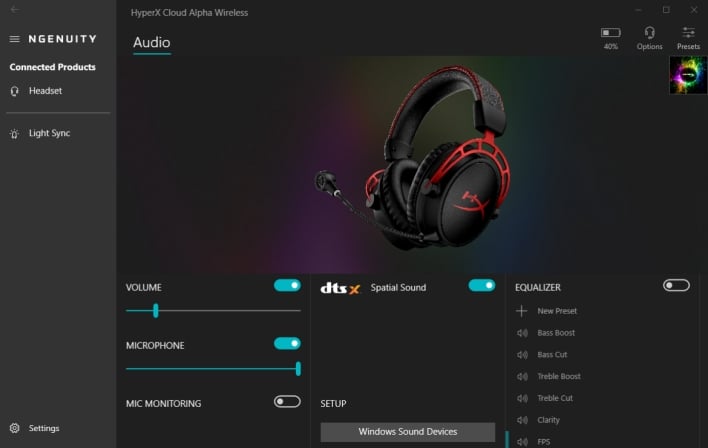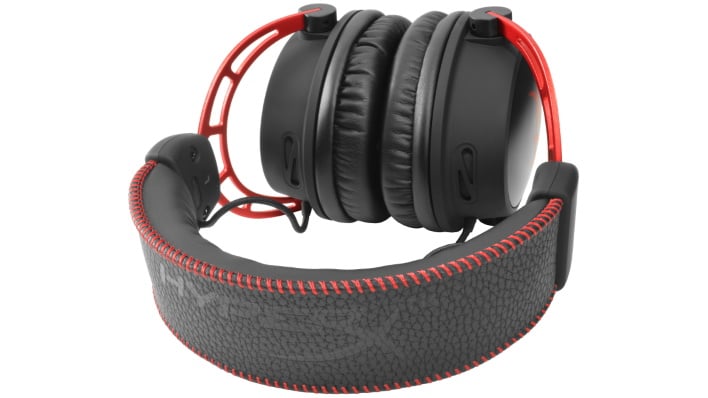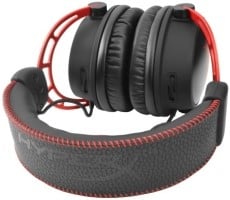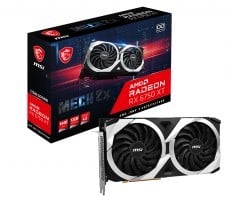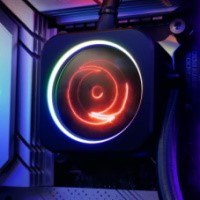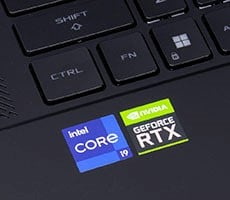HyperX Cloud Alpha Wireless Headset Review: Great Battery Life And Fidelity
HyperX Cloud Alpha Headset: Great Wireless Gaming Audio With Awesome Battery Life
In 2017, HyperX released what was then the ultimate iteration of the Cloud design in the form of the Cloud Alpha, which featured refreshed looks, better drivers, and a significantly improved microphone. Then in 2018, the company put forward its first ever wireless headset: the Cloud Flight. Sadly, while the Cloud Flight was a good wireless gaming headset in its own right, it deviated from the recognizable Cloud design, opting for a plastic outer construction over the leatherette-wrapped aluminum band of the Cloud Alpha and others before it. The Cloud Flight also marked a step backwards in driver and microphone quality, compared to the Cloud Alpha, but carried a higher price tag.
However, now in 2022, the HyperX Cloud Alpha is taking flight and going wireless. We’re going to take a look at the new HyperX Cloud Alpha Wireless in order to see whether this gaming headset holds up without the cord. The same premium bones are there, but we’ll have to assess whether the implementation of wireless connectivity justifies doubling the price of the original Cloud Alpha.
HyperX Cloud Alpha Wireless Design, Specs, And Features
| Headphones |
|
| Form Factor |
Over ear, circumaural, closed back |
| Drivers |
Dynamic, 50mm with neodymium magnets |
| Frequency Response |
15 - 21,000 Hz |
| Impedance |
62 Ohm |
| Sensitivity |
103 Db |
| Total Harmonic Distortion |
≤ 2% |
| Sample Rate |
48 kHz |
| Bit-Depth |
24 bit |
| Sound Output Mode |
Stereo |
| Surround Sound |
DTS Headphone: X Spatial Sound |
| Microphone |
|
| Element |
Electret condenser microphone |
| Polar Pattern |
Bi-directional, Noise-cancelling |
| Frequency Response |
50 – 7,200 Hz |
| Sensitivity |
-15 dB |
| Misc |
|
| Connection |
Wireless 2.4GHz up to 66 ft / 20 m via USB 2.0 dongle |
| Battery Life |
Up to 300 hours (50% headphone volume) |
| Charge Time |
4.5 hours |
| Charging Port |
USB-C |
| Onboard Controls |
Power On/Off, Volume, Mic Mute |
| Weight |
0.74 lbs / 335 g (0.71 lbs / 322 g without mic) |
| Pricing |
$199 - Find The HyperX Cloud Alpha @ Amazon |
HyperX Cloud Alpha Design, Build Quality And Comfort
We still like the classy look of the Cloud Alpha after all these years, and the wireless edition doesn’t change that look is any significant way. However, as with the original Cloud Alpha, we wish there were additional color options for the Cloud Alpha Wireless beyond red-and-black. HyperX offers different color combinations for some of its other headsets, and we particularly like the gunmetal-and-black color scheme of the Cloud MIX for its subtler, tasteful appearance.
The Cloud Alpha Wireless weighs a total of 336 grams (0.74 lbs.) with the microphone attached, which is one gram heavier than the wired Cloud Alpha with its cable attached. Presumably, the batteries in the wireless headset weigh about as much as the cable of the wired version. While exchanging a cable for batteries moves a bit of weight up into the earphones where it can’t be supported by a desk, lap, or chair, the difference is negligible. The Cloud Alpha Wireless feels just as comfortable on the head as the wired version and doesn’t feel heavy after many hours of continued use.
The flexibility of the headband helps with comfort too, as the headband can easily stretch to accommodate different head sizes. The headband can also extend with eleven steps of adjustability on both sides of the headset. Additionally, the points where the aluminum band meets the earphones rotate so the earphones can move to stay flat against the side of the wearer’s head regardless of one’s head size. Furthermore, the headset grips tight enough not to fall or slide off, but doesn’t apply an uncomfortable amount pressure.
HyperX Cloud Alpha Wireless Connectivity
We initially had some trouble with the Cloud Alpha Wireless, where the audio would intermittently cut out for very short periods. This behavior was surprising to us, as we’ve never observed similar behavior with the Cloud Flight over years of use, other than when standing near an active microwave. Fortunately, after consulting HyperX, we were able to address this problem by removing a wireless mouse receiver from the same USB port bank as the headset’s wireless receiver. We weren’t using the associated wireless mouse at the time, so unplugging its receiver wasn’t an issue for us. We haven’t experienced any more audio issues since then, but we still find it a little odd that a wireless mouse receiver would interfere with the headset’s wireless connection. Perhaps this interference had something to do with the wireless receiver being shorter than that of the Cloud Flight, but we’re not sure. Other reviewers seem not to have had this same issue, so there could simply be some kind of problem with our particular setup.After resolving the connection issue, our experience with the Cloud Alpha Wireless was smooth sailing from there on out. As we found with the Cloud Flight, cutting the cord and going wireless is a liberating experience. No longer being tethered by a cable running from your computer to your head means you’re free to step away from your computer at any time and continue listening to music or talking with friends. That said, wireless headsets require battery power, which has the potential to be an inconvenience depending on the battery life and charging technology.
Fortunately, the Cloud Alpha Wireless has exceptionally good battery life. According to HyperX, the battery can last up to 300 hours with the headset at 50% volume, and we believe that claim. Our review unit arrived with around 90% battery, and it lasted for almost a whole month of fairly heavy use before warning that it was low on battery. That’s quite incredible battery performance when compared to the Cloud Flight, which has an estimated battery life of just 30 hours when the LED lighting is disabled; enabling the LEDs drops that estimate down to just 13 hours. Requiring only a single charge over the course of a month pretty much eliminates the inconvenience of a battery-powered device, as far as we’re concerned.
HyperX Cloud Alpha Sound Quality
HyperX has equipped the Cloud Alpha Wireless with a pair of 50mm dual chamber drivers that the company claims are slimmer, and lighter than those of the original wired Cloud Alpha, yet retain the same audio quality. The slimmer drivers help the earcups of the wireless headset more comfortably and fully encompass the wearer’s ears than the wired version. Additionally, the audio quality of the Cloud Alpha Wireless not only matches that of the wired version, but surpasses it.Gaming headsets usually have a somewhat bass-heavy sound profile that accentuates the sounds of explosions, gunshots, and other percussive sound effects in games. While the Cloud Alpha Wireless doesn’t deviate from this formula, it still has well balanced mids and highs. The HyperX NGenuity software also has a number of audio profile presets, one of which is called “Bass Cut” and brings the bass more in line with the mids and highs. Meanwhile, the original Cloud Alpha is lacking in certain areas of the mid to high range, and sounds hollow in comparison to the wireless headset. The Cloud Flight also has insufficient midrange oomph. The Cloud Alpha Wireless has a richer and more full sound than both these headsets, particularly with Bass Cut enabled while listening to music. As with any gaming headset, audiophiles looking for a wireless pair of headphones primarily for listening to music should probably look elsewhere, but the Cloud Alpha Wireless is a very nice sounding gaming headset.
We don’t recommend the using the Cloud Alpha Wireless’ detachable microphone for video or podcast production, but it works well for gaming, as well as regular voice and video calls. We used the microphone in many hours of voice calls, and no one ever complained about intelligibility or audio quality. You can take a listen to the audio samples below to judge for yourself.
|
|
HyperX Cloud Alpha Software Experience
Gaming peripheral software doesn’t always have the most intuitive user interface, with designers often prioritizing a “gamer” aesthetic over usability. Fortunately, the NGenuity user interface is simple and straightforward. All the settings are displayed on a single page, rather than being divided among a number of unnecessary tabs or multi-layered submenus, and the interface even includes a button that takes you directly to the Windows Sound Devices menu so you can adjust settings that are handled by the operating system. NGenuity does exactly what it needs to do and doesn’t get in your way or require you to login to a HyperX account.
We only wish that NGenuity wasn’t a Microsoft Store exclusive. You can download an installation executable from the NGenuity webpage on HyperX’s website, but the installer is way out of date and failed to install when we gave it a try. However, even if this executable worked, Linux and macOS users would still be out of luck.
HyperX Cloud Alpha Wireless Headset Conclusions
The cordless nature of the Cloud Alpha Wireless makes for a freeing experience for those coming from wired headsets like the original Cloud Alpha. The Cloud Alpha Wireless follows in the footsteps of the Cloud Flight in this respect, but we prefer the former over the latter hands down. The Cloud Flight feels like a cheaper headset by comparison, and the staggering 300 hour battery life of the Cloud Alpha Wireless beats out the Cloud Flight’s battery life by a factor of ten or even more with the LEDs enabled. The only feature we miss from the Cloud Flight is the swiveling earcups for comfortably resting the headset around the neck while not in use.
The HyperX Cloud Flight Wireless has a $199 price tag, which is a bit steep in comparison to some competitive offerings. The comparable SteelSeries Arctis 7+ is $30 cheaper, and audiophiles willing to shell out $200 should also consider traditional headphones. That said, if you want a wireless gaming headset with a premium, no-nonsense design, good audio quality, and incredible battery life, we can definitely recommend the HyperX Cloud Flight Wireless.

|
|

